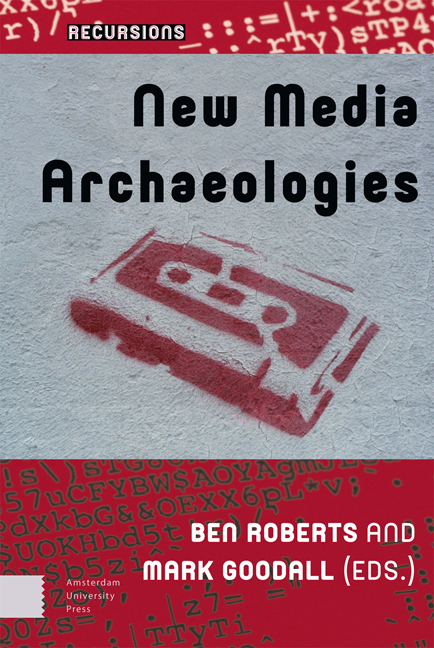Introduction
Published online by Cambridge University Press: 21 November 2020
Summary
This collection of essays highlights innovative work in the developing field of media archaeology. It builds on the conference Archaeologies of Media and Film organized by the editors in collaboration with the UK National Media Museum and Royal Television Society in September 2014. The volume includes essays by some of the contributors to that conference and it focuses, in particular, on the relationship between theory and practice and the contribution that experimentation can make to our understanding of media archaeology.
In the last decade, a growing number of volumes dedicated to the topic of media archaeology have been published, notably Siegfried Zielinski's Deep Time of the Media (2006 [2002]), Jussi Parikka's What is Media Archaeology? (2012), Erkki Huhtamo's Illusions in Motion (2013), and Wolfgang Ernst's Digital Memory and the Archive (2013). We would highlight here two very recent and notable contributions: Thomas Elsaesser's Film History as Media Archaeology: Tracking Digital Cinema and Wolfgang Ernst's Sonic Time Machines: Explicit Sound, Sirenic Voices, and Implicit Sonicity (both 2016).
In Sonic Time Machines, Wolfgang Ernst argues that media archaeology needs to be understood not only as a way of understanding media technology, but also as ‘a form of technical perception in which the technological device itself turns into a listening organ’ (Ernst, p. 31). This ‘sonic’ dimension of time-based media allows the media archaeologist to access the past in ways distinct from the interpretative methods of historiography, because these media preserve ‘technological knowledge of the material past’ (Ibid., p. 113). This technological knowledge can be analysed using tools quite distinct from those of traditional hermeneutic interpretation. Fourier analysis can be used to break down sound into its constituent waveforms. Computational methods equally allow us to break down and understand audio in new ways. For example, the algorithms developed for music recognition software may lead to new forms of searching and sorting audio archives. Ultrasound monitors provide the metaphor here: they emit, measure, and manipulate human inaudible sound into an image that is legible to the human eye (Ibid., p. 31).What Ernst calls ‘sonicity’ is not confined to the audio domain, but opens up time-based media technology in general to new forms of analysis.
- Type
- Chapter
- Information
- New Media Archaeologies , pp. 9 - 20Publisher: Amsterdam University PressPrint publication year: 2019

